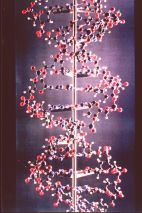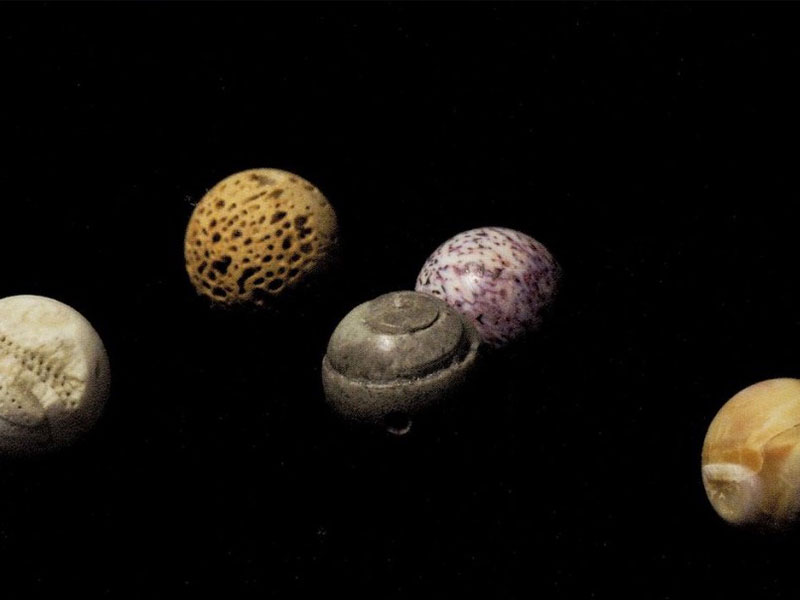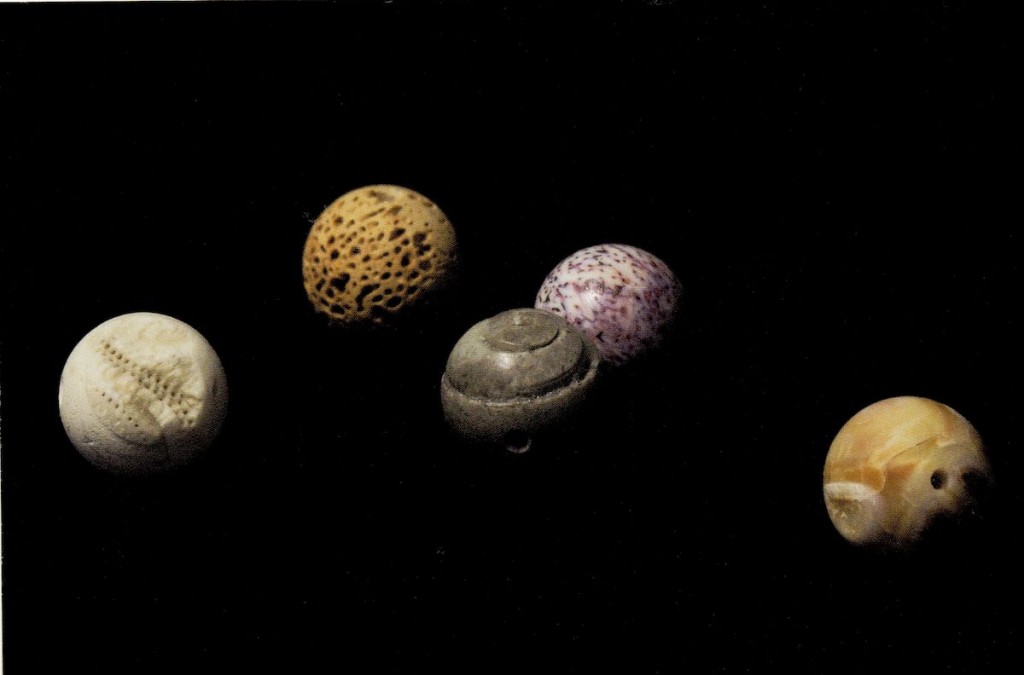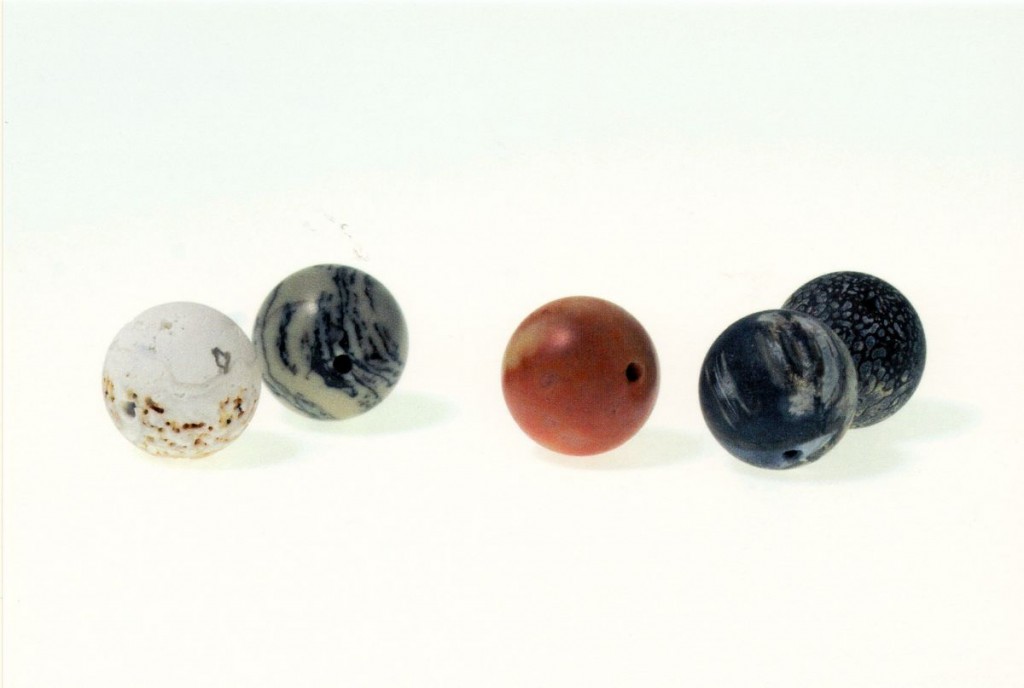Katie Paterson held an exhibition at Kettle’s Yard, Cambridge in June 2013 called ‘Fossil Necklace’; the necklace was hung in Little St. Peter’s Church next to Kettle’s Yard. Each bead was carved out of a fossil, some dating back to the beginning of life on earth during the Precambrian, more than 545 million years ago. The first fossil was from single-celled organisms. The fossil in the last bead came from a Cypriot pygmy hippopotamus, found in Mesopotamia. Against the light in the church the intricate structures of the fossils could be seen.
‘Fossil Necklace’ by Katie Paterson, Kettles Yard, Cambridge. Photo © MJC
TREE OF LIFE
In the leaflet for the ‘Fossil Necklace’ exhibition at The Wellcome Trust Sanger Institute, Dr. Chris Tyler-Smith writes the following:
“We can all appreciate how fossils can be translated into beads on a necklace to become a work of art in an exhibition. But how does genetics, which is what we study at The Wellcome Trust Sanger Institute, fit in? The answer is actually simple: DNA. To appreciate this link, consider the following ideas. Every individual living now, in the past or the future traces their origin (DNA) back through an unbroken chain of ancestors to the origin of life. There really is a ‘tree of life’ linking every living and extinct species. In the past, the only way to reconstruct this tree was using anatomy, from living species and especially from fossils. Now we also do it using DNA, the more similar the DNA, the closer the species are on the tree”

© MRC, Cambridge University



